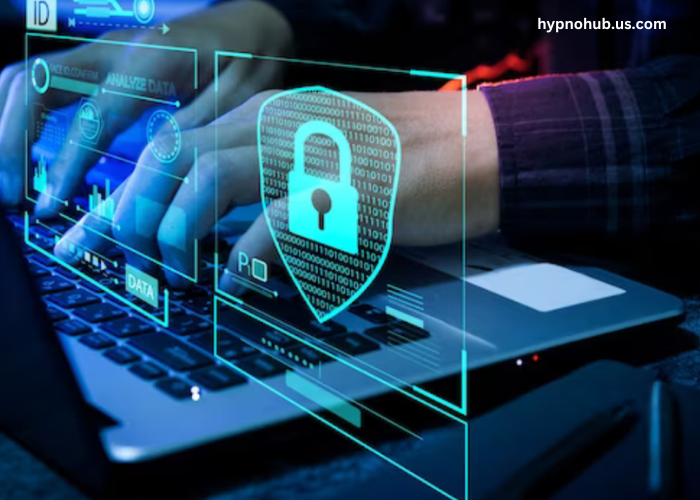As technology continues to evolve, the need for robust cybersecurity measures has never been more critical. With the growing reliance on digital systems and the surge in data breaches, cyber threats are becoming increasingly sophisticated. Protecting personal and organizational data requires staying ahead of these trends to avoid costly security lapses and data leaks. Here are some of the key cybersecurity trends to help safeguard your information in 2024.
1. Zero Trust Architecture (ZTA)
Zero Trust is quickly becoming the standard in cybersecurity frameworks. Unlike traditional security models that trust users and devices inside the network perimeter, Zero Trust assumes that both internal and external networks are vulnerable. It requires continuous verification of identities, devices, and data to grant access to resources.
Why it matters:
In the modern work environment, especially with hybrid work models, traditional perimeter defenses like firewalls are no longer sufficient. Zero Trust eliminates the “trust but verify” approach, replacing it with “never trust, always verify.” This approach ensures that only authorized individuals and devices can access sensitive data, reducing the risk of insider threats and breaches.
What you can do:
Adopt a Zero Trust model by implementing strict access controls, multi-factor authentication (MFA), and network segmentation. Continuously monitor user activity and enforce strict data security policies.
2. Artificial Intelligence (AI) and Machine Learning (ML) in Cybersecurity
AI and ML are transforming the way organizations approach cybersecurity. These technologies help detect and mitigate threats by analyzing vast amounts of data and recognizing patterns faster than human analysts.
Why it matters:
Cyber attackers are increasingly using AI to automate and scale their attacks. In response, AI-powered cybersecurity tools can identify anomalies, predict attacks, and respond in real-time. This proactive defense approach reduces the time to detect and mitigate threats, limiting the potential damage caused by cyber incidents.
What you can do:
Leverage AI-powered tools for threat detection, anomaly monitoring, and predictive analysis. These tools can help you identify potential vulnerabilities and protect your data from advanced persistent threats (APTs) and other sophisticated cyberattacks.
3. Cloud Security
As businesses increasingly migrate to the cloud, securing cloud environments has become a top priority. Cloud providers offer strong security measures, but organizations must also take responsibility for securing their data, applications, and networks within the cloud.
Why it matters:
Cloud environments are attractive targets for cybercriminals due to the large volumes of sensitive data they host. Misconfigured cloud settings and insufficient access controls can lead to massive data leaks and breaches.
What you can do:
Ensure strong cloud security by implementing encryption, multi-factor authentication (MFA), and comprehensive identity and access management (IAM) solutions. Regularly audit your cloud configurations and maintain a clear understanding of shared responsibility models with cloud providers.
4. Ransomware Prevention and Response
Ransomware attacks continue to be one of the most prevalent and damaging types of cybercrime. Attackers encrypt critical data and demand payment for its release, often crippling organizations in the process. In 2024, ransomware tactics are becoming more advanced, with attackers targeting specific industries and leveraging sophisticated social engineering techniques.
Why it matters:
Ransomware attacks can cause severe financial loss, reputation damage, and operational disruptions. Cybercriminals are becoming more organized and focused, often exploiting known vulnerabilities or using phishing to infiltrate networks.
What you can do:
Implement robust endpoint protection systems and regularly back up critical data. Educate employees about phishing and other social engineering tactics to reduce the risk of successful attacks. Additionally, maintain an incident response plan specifically for ransomware attacks, which includes regular backups, offline copies, and network segmentation to limit the spread of ransomware.
5. Privacy Regulations and Data Protection
With increasing concerns over privacy, many regions are enacting stricter regulations surrounding data protection. The General Data Protection Regulation (GDPR) in Europe, California’s Consumer Privacy Act (CCPA), and similar regulations around the world are raising the bar for data security and privacy.
Why it matters:
Compliance with these regulations is essential to avoid fines and legal repercussions. More importantly, adhering to data protection laws helps organizations maintain customer trust and loyalty. Data breaches or mishandling of personal data can result in not just financial penalties, but a loss of reputation.
What you can do:
Stay updated on privacy regulations and ensure that your organization complies with the latest data protection laws. This includes adopting data encryption, limiting data retention periods, and providing customers with clear information about how their data is being used. Implement strong data access controls to ensure only authorized individuals can view sensitive information.
6. Extended Detection and Response (XDR)
Extended Detection and Response (XDR) is an advanced cybersecurity solution that integrates data from multiple security layers (network, endpoint, server, and cloud) into a unified platform for more comprehensive threat detection and response.
Why it matters:
As cyber threats evolve, the complexity of defending against them increases. XDR provides real-time visibility across various systems, enabling faster detection and response to threats. By correlating data across different sources, XDR can identify multi-layered attacks that traditional tools might miss.
What you can do:
Consider investing in XDR solutions to improve your organization’s ability to detect, investigate, and respond to threats more efficiently. This integrated approach enables better threat visibility and faster resolution, reducing the time attackers have to infiltrate your systems.
7. Secure Access Service Edge (SASE)
SASE is an emerging cybersecurity model that combines wide-area networking (WAN) capabilities with cloud-native security services, such as secure web gateways, firewall-as-a-service, and zero trust network access. SASE enables businesses to secure their distributed workforces and applications without relying on traditional network perimeter-based solutions.
Why it matters:
As workforces become more mobile and distributed, traditional network security models are no longer sufficient. SASE provides a more scalable and flexible solution, enabling secure access to applications and data regardless of location.
What you can do:
Implement SASE to secure remote and hybrid work environments. This includes leveraging cloud-delivered security services and ensuring that all users, regardless of location, are authenticated and authorized to access critical resources.
8. Biometric Authentication
The use of biometric authentication—such as fingerprint scanning, facial recognition, and iris scanning—is gaining momentum as a secure and convenient alternative to traditional passwords.
Why it matters:
Biometric data offers a higher level of security compared to passwords, which can be stolen or guessed. With the growing sophistication of identity theft, biometric authentication provides a more reliable and secure method of verifying user identity.
What you can do:
Incorporate biometric authentication in sensitive systems and applications, especially for remote work environments or customer-facing services. Ensure that biometric data is securely stored and encrypted to prevent unauthorized access.
Conclusion
As cyber threats become more advanced, organizations and individuals must remain vigilant and proactive in safeguarding their data. Implementing the latest cybersecurity trends—such as Zero Trust, AI-driven defense systems, cloud security, and privacy compliance—can significantly reduce the risk of data breaches and cyberattacks. By staying ahead of the curve and adopting a multi-layered security approach, you can better protect your valuable data and maintain the trust of your customers and stakeholders.





